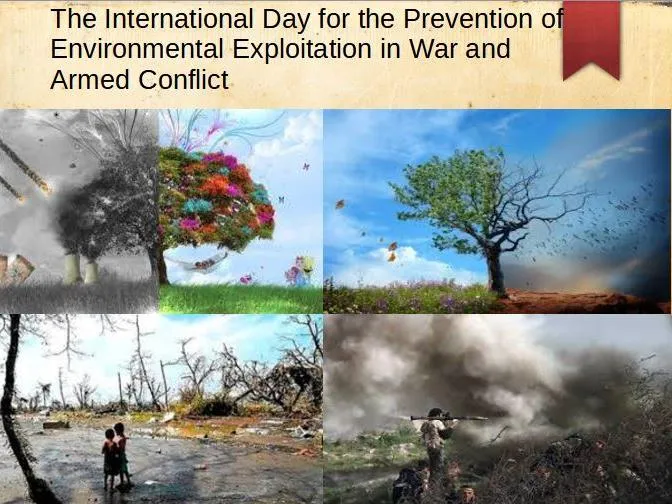Biggest Environmental Problems Of 2022
- Destination Europe
- Added by Admin
- December 01, 2022

While the climate crisis has many factors that play a role
in the exacerbation of the environment, there are some that warrant more
attention than others. Here are some of the biggest environmental problems of
our lifetime, from deforestation and biodiversity loss to food waste and fast
fashion.
1.Global Warming From Fossil
Fuels
At time of publication, CO2 PPM (parts per million) is at 418 and the global temperature rise is 1.1 degrees Celsius compared to pre-industrial levels.
The last time carbon dioxide levels on our planet were as high as today was more than 4 million years ago. Increased emissions of greenhouse gases have led to a rapid and steady increase in global temperatures, which in turn is causing catastrophic events all over the world – from Australia and the US experiencing some of the most devastating bushfire seasons ever recorded, locusts swarming across parts of Africa, the Middle East and Asia, decimating crops, and a heatwave in Antarctica that saw temperatures rise above 20 degrees for the first time. Scientists are constantly warning that the planet has crossed a series of tipping points that could have catastrophic consequences, such as advancing permafrost melt in Arctic regions, the Greenland ice sheet melting at an unprecedented rate, accelerating sixth mass extinction, and increasing deforestation in the Amazon rainforest, just to name a few.JOIN THE Nidhivan Foundation To save The Nature
The climate crisis is causing tropical storms and other weather events such as hurricanes, heatwaves and flooding to be more intense and frequent than seen before. However, even if all greenhouse gas emissions were halted immediately, global temperatures would continue to rise in the coming years. That is why it is absolutely imperative that we start now to drastically reduce greenhouse gas emissions, invest in renewable energy sources, and phase our fossil fuels as fast as possible.
2. Poor Governance
According to economists like Nicholas Stern, the climate crisis is a result of multiple market failures.Economists and environmentalists have urged policymakers for years to increase the price of activities that emit greenhouse gases (one of our biggest environmental problems), the lack of which constitutes the largest market failure, for example through carbon taxes, which will stimulate innovations in low-carbon technologies.
To cut emissions quickly and effectively enough, governments must not only massively increase funding for green innovation to bring down the costs of low-carbon energy sources, but they also need to adopt a range of other policies that address each of the other market failures.
A national carbon tax is currently implemented in 27 countries around the world, including various countries in the EU, Canada, Singapore, Japan, Ukraine and Argentina. However, according to the 2019 OECD Tax Energy Use report, current tax structures are not adequately aligned with the pollution profile of energy sources. For example, the OECD suggests that carbon taxes are not harsh enough on coal production, although it has proved to be effective for the electricity industry. A carbon tax has been effectively implemented in Sweden; the carbon tax is USD $127 per tonne and has reduced emissions by 25% since 1995, while its economy has expanded 75% in the same time period.
Further, organisations such as the United Nations are not fit to deal with the climate crisis: it was assembled to prevent another world war and is not fit for purpose. Anyway, members of the UN are not mandated to comply with any suggestions or recommendations made by the organisation. For example, the Paris Agreement, an agreement within the United Nations Framework Convention on Climate Change, says that countries need to reduce greenhouse gas emissions significantly so that global temperature rise is below 2 degrees Celsius by 2100, and ideally under 1.5 degrees. But signing on to it is voluntary, and there are no real repercussions for non-compliance. Further, the issue of equity remains a contentious issue whereby developing countries are allowed to emit more in order to develop to the point where they can develop technologies to emit less, and it allows some countries, such as China, to exploit this.
3. Food Waste
A third of the food intended for human consumption – around 1.3 billion tons – is wasted or lost. This is enough to feed 3 billion people. Food waste and loss account for a third of greenhouse gas emissions annually; if it was a country, food waste would be the third highest emitter of greenhouse gases, behind China and the US.
Food waste and loss occurs at different stages in developing and developed countries; in developing countries, 40% of food waste occurs at the post-harvest and processing levels, while in developed countries, 40% of food waste occurs at the retail and consumer levels.
At the retail level, a shocking amount of food is wasted because of aesthetic reasons; in fact, in the US, more than 50% of all produce thrown away in the US is done so because it is deemed to be “too ugly” to be sold to consumers- this amounts to about 60 million tons of fruits and vegetables. This leads to food insecurity, another one of the biggest environmental problems on the list.
4. Biodiversity Loss
The past 50 years have seen a rapid growth of human consumption, population, global trade and urbanisation, resulting in humanity using more of the Earth’s resources than it can replenish naturally.
A recent WWF report found that the population sizes of mammals, fish, birds, reptiles and amphibians have experienced a decline of an average of 68% between 1970 and 2016. The report attributes this biodiversity loss to a variety of factors, but mainly land-use change, particularly the conversion of habitats, like forests, grasslands and mangroves, into agricultural systems. Animals such as pangolins, sharks and seahorses are significantly affected by the illegal wildlife trade, and pangolins are critically endangered because of it.
More broadly, a recent analysis has found that the sixth mass extinction of wildlife on Earth is accelerating. More than 500 species of land animals are on the brink of extinction and are likely to be lost within 20 years; the same number were lost over the whole of the last century. The scientists say that without the human destruction of nature, this rate of loss would have taken thousands of years.
5. Plastic Pollution
In 1950, the world produced more than 2 million tons of plastic per year. By 2015, this annual production swelled to 419 million tons and exacerbating plastic waste in the environment.
A report by science journal, Nature, determined that currently, roughly 14 million tons of plastic make their way into the oceans every year, harming wildlife habitats and the animals that live in them. The research found that if no action is taken, the plastic crisis will grow to 29 million metric tons per year by 2040. If we include microplastics into this, the cumulative amount of plastic in the ocean could reach 600 million tons by 2040.
Shockingly, National Geographic found that 91% of all plastic that has ever been made is not recycled, representing not only one of the biggest environmental problems of our lifetime, but another massive market failure. Considering that plastic takes 400 years to decompose, it will be many generations until it ceases to exist. There’s no telling what the irreversible effects of plastic pollution will have on the environment in the long run.
6. Deforestation
Every hour, forests the size of 300 football fields are cut down. By the year 2030, the planet might have only 10% of its forests; if deforestation isn’t stopped, they could all be gone in less than 100 years.
Agriculture is the leading cause of deforestation, another one of the biggest environmental problems appearing on this list. Land is cleared to raise livestock or to plant other crops that are sold, such as sugar cane and palm oil. Besides for carbon sequestration, forests help to prevent soil erosion, because the tree roots bind the soil and prevent it from washing away, which also prevents landslides.
The three countries experiencing the highest levels of deforestation are Brazil, the Democratic Republic of Congo and Indonesia, however Indonesia is tackling deforestation, now seeing the lowest rates since the beginning of the century.
7. Air Pollution
One of the biggest environmental problems today is outdoor air pollution. Research from the World Health Organization (WHO) shows that an estimated 4.2 to 7 million people die from air pollution worldwide every year and that nine out of 10 people breathe air that contains high levels of pollutants. In Africa, 258,000 people died as a result of outdoor air pollution in 2017, up from 164,000 in 1990, according to UNICEF. Causes of air pollution mostly comes from industrial sources and motor vehicles, as well as emissions from burning biomass and poor air quality due to dust storms.
In Europe, a recent report from the EU’s environment agency showed that air pollution contributed to 400 000 annual deaths in the EU in 2012 (the last year for which data was available).
In the wake of the COVID-19 pandemic, attention has been put on the role that air pollution gases has in transporting the virus molecules. Preliminary studies have identified a positive correlation between COVID-19-related mortalities and air pollution and there is also a plausible association of airborne particles assisting the viral spread. This could have contributed to the high death toll in China, where air quality is notoriously poor, although more definitive studies must be conducted before such a conclusion can be drawn.
8. Melting Ice Caps and Sea Level Rise
The climate crisis is warming the Arctic more than twice as fast as anywhere else on the planet. Today, sea levels are rising more than twice as quickly as they did for most of the 20th century as a result of increasing temperatures on Earth. Seas are now rising an average of 3.2 mm per year globally and they will continue to grow up to about 0.7 metres by the end of this century. In the Arctic, the Greenland Ice Sheet poses the greatest risk for sea levels because melting land ice is the main cause of rising sea levels.
Representing arguably the biggest of the environmental problems, this is made all the more concerning considering that last year’s summer triggered the loss of 60 billion tons of ice from Greenland, enough to raise global sea levels by 2.2mm in just two months. According to satellite data, the Greenland ice sheet lost a record amount of ice in 2019: an average of a million tons per minute throughout the year, one of the biggest environmental problems that has cascading effects.
If the entire Greenland ice sheet melts, sea level would rise by six metres.
Meanwhile, the Antarctic continent contributes about 1 millimetre per year to sea level rise, which is a third of the annual global increase. Additionally, the last fully intact ice shelf in Canada in the Arctic recently collapsed, having lost about 80 square kilometres – or 40% – of its area over a two-day period in late July, according to the Canadian Ice Service.
The sea level rise will have a devastating impact on those living in coastal regions: according to research and advocacy group Climate Central, sea level rise this century could flood coastal areas that are now home to 340 million to 480 million people, forcing them to migrate to safer areas and contributing to overpopulation and strain of resources in the areas they migrate to.
Take Shanghai’s megalopolis for example, which is built around the low-lying Yangtze river delta. As the fourth most populous city in the world, the flood risk in the area is high due to its geographical position. Any flooding caused by a higher rainfall can potentially be catastrophic in relation to evacuation, water management and property damage.
9. Ocean Acidification
Global temperature rise has not only affected the surface, but it is the main cause of ocean acidification. Our oceans absorb about 30% of carbon dioxide that is released into the Earth’s atmosphere. As higher concentrations of carbon emissions are released thanks to human activities such as burning fossil fuels as well as effects of global climate change such as increased rates of wildfires, so do the amount of carbon dioxide that is absorbed back into the sea.
The smallest change in the pH scale can have a significant impact on the acidity of the ocean. Ocean acidification can have a ripple effect across marine ecosystems and species, its food webs, and provoke irreversible changes in habitat quality. Once pH levels reach too low, marine organisms such as oysters, their shells and skeleton could even start to dissolve.
However, one of the biggest environmental problems from ocean acidification is coral bleaching and subsequent coral reef loss. This is a phenomenon that occurs when rising ocean temperatures disrupt the symbiotic relationship between the reefs and algae that lives within it, driving away the algae and causing coral reefs to lose their natural vibrant colours. Some scientists have estimated coral reefs are at risk of being completely wiped by 2050. Higher acidity in the ocean would obstruct coral reef systems’ ability to rebuild their exoskeletons and recover from these coral bleaching events.
Some studies have also found that ocean acidification can be linked as one of the effects of plastic pollution in the ocean. The accumulating bacteria and microorganisms derived from plastic garbage dumped in the ocean to damage marine ecosystems and contribute towards coral bleaching.
10. Agriculture
Studies have shown that the global food system is responsible for up to one third of all human-caused greenhouse gas emissions, of which 30% comes from livestock and fisheries. Crop production releases greenhouse gases such as nitrous oxide through the use of fertilisers.
60% of the world’s agricultural area is dedicated to cattle ranching, although it only makes up 24% of global meat consumption.
Agriculture not only covers a vast amount of land, but it also consumes a vast amount of freshwater, another one of the biggest environmental problems on this list. While arable lands and grazing pastures cover one-third of Earth’s land surfaces, they consume three-quarters of the world’s limited freshwater resources.
Scientists and environmentalists have continuously warned that we need to rethink our current food system; switching to a more plant-based diet would dramatically reduce the carbon footprint of the conventional agriculture industry.
11. Food and Water Insecurity
Rising temperatures and unsustainable farming practices has resulted in the increasing threat of water and food insecurity and taking the mantle as one of the biggest environmental problems today.
Globally, more than 68 billion tonnes of top-soil is eroded every year at a rate 100 times faster than it can naturally be replenished. Laden with biocides and fertiliser, the soil ends up in waterways where it contaminates drinking water and protected areas downstream.
Furthermore, exposed and lifeless soil is more vulnerable to wind and water erosion due to lack of root and mycelium systems that hold it together. A key contributor to soil erosion is over-tilling: although it increases productivity in the short-term by mixing in surface nutrients (e.g. fertiliser), tilling is physically destructive to the soil’s structure and in the long-term leads to soil compaction, loss of fertility and surface crust formation that worsens topsoil erosion.
With the global population expected to reach 9 billion people by mid-century, the Food and Agriculture Organization of the United Nations (FAO) projects that global food demand may increase by 70% by 2050. Around the world, more than 820 million people do not get enough to eat.
The UN secretary-general António Guterres says, “Unless immediate action is taken, it is increasingly clear that there is an impending global food security emergency that could have long term impacts on hundreds of millions of adults and children.” He urged for countries to rethink their food systems and encouraged more sustainable farming practices.
In terms of water security, only 3% of the world’s water is fresh water, and two-thirds of that is tucked away in frozen glaciers or otherwise unavailable for our use.
As a result, some 1.1 billion people worldwide lack access to water, and a total of 2.7 billion find water scarce for at least one month of the year. By 2025, two-thirds of the world’s population may face water shortages.
12. Fast Fashion and Textile Waste
The global demand for fashion and clothing has risen at an unprecedented rate that the fashion industry now accounts for 10% of global carbon emissions, becoming one of the biggest environmental problems of our time. Fashion alone produces more greenhouse gas emissions than both the aviation and shipping sectors combined, and nearly 20% of global wastewater, or around 93 billion cubic metres from textile dyeing, according to the UN Environment Programme.
What’s more, the world at least generated an estimated 92 million tonnes of textiles waste every year and that number is expected to soar up to 134 million tonnes a year by 2030. Discarded clothing and textile waste ends up in landfills, most of which is non-biodegradable, while microplastics from clothing materials such as polyester, nylon, polyamide, acrylic and other synthetic materials, is leeched into soil and nearby water sources. Monumental amounts of clothing textile are also dumped in less developed countries as seen with Chile’s Atacama, the driest desert in the world, where at least 39,000 tonnes of textile waste from other nations are left there to rot.
This rapidly growing issue is only exacerbated by the ever-expanding fast fashion business model, in which companies relies on cheap and speedy production of low quality clothing to meet the latest and newest trends. While the United Nations Fashion Industry Charter for Climate Action sees signatory fashion and textile companies to commit to achieving net zero emission by 2050, a majority of businesses around the world have yet to address their roles in climate change.
While these are some of the biggest environmental problems plaguing our planet, there are many more that have not been mentioned, including overfishing, urban sprawl, toxic superfund sites and land use changes. While there are many facets that need to be considered in formulating a response to the crisis, they must be coordinated, practical and far-reaching enough to make enough of a difference.
13. Overfishing
Over three billion people around the world rely on fish as their primary source of protein. About 12% of the world relies upon fisheries in some form or another, with 90% of these being small-scale fishermen – think a small crew in a boat, not a ship, using small nets or even rods and reels and lures not too different from the kind you probably use. Of the 18.9 million fishermen in the world, 90% of them fall under the latter category.
Most people consume approximately twice as much food as they did 50 years ago and there are four times as many people on earth as there were at the close of the 1960s. This is one driver of the 30% of commercially fished waters being classified as being ‘overfished’. This means that the stock of available fishing waters is being depleted faster than it can be replaced.
Overfishing comes with detrimental effects on the environment, including increased algae in the water, destruction of fishing communities, ocean littering as well as extremely high rates of biodiversity loss.
As part of the United Nations’ 17 Sustainable Development Goals (SDG 14), the UN and FAO are working towards maintaining the proportion of fish stocks within biologically sustainable levels. This, however, requires much stricter regulations of the world’s oceans than the ones already in place. In July 2022, the WTO banned fishing subsidies to reduce global overfishing in a historic deal. Indeed, subsidies for fuel, fishing gear, and building new vessels, only incentivise overfishing and represent thus a huge problem.
What Can I Do?
1. On A Personal Level
Ways to approach climate action within our personal lives (hint – it evolves personal action but is not focused on small behavioural changes, which whilst worthwhile will not get us there):
· Joining a community can be one of the best ways to increase your impact.
· First, it can enable you to make hundreds of connections in one go.
· Second, a group of people working together can have more impact than individuals. If you are not already, take action by becoming an EO Member to support our mission to encourage a billion climate activists.
· If you’re a younger read ask your parents to take action by bringing your whole family on board as a Family Member.
· Reflect on the concept of Effective Altruism, a project that aims to find the best ways to help others, and put them into practice.
2. On A Professional Level
Ways to approach climate action within the workplace:
· Maintain your career path but consider donating a portion of your income to organisations that are focused on achieving meaningful & impactful goals and call out your boss if the company or organisation you work for does not have clear policies that will result in reduced harm to the environment and a pathway to Net Zero.
· Ask your boss to support EO by bringing the whole team onboard with EO company membership – and take action together.
3. On A Political Level
Ways to approach climate action as a voter or political actor (even if you can’t vote):
· Protest – make your feelings known – become a vocal and passionate advocate with friends and family (without being over pushy) of the need for climate action. We need a billion activists to turn this ship around.
· Join organisations that are organising climate actions and protests locally, whether in your city, district, or even at school.
· Vote (if you can) for politicians who will champion effective climate action by governments.
· Vote for parties or organisations that espouse self-reform and the adoption of ‘Ministers of the Future’ into government.
Recent Post
View AllMosambi juice health benefits
Mosambi, also known as sweet lime, is a citrus fruit that is packed with nutrients and offers ...
The Major Oak
The Major Oak is a large, ancient oak tree located in Sherwood Forest, Nottinghamshire, Engla...
WHAT IS ECO-ANXIETY?
The psychological impact of climate change on some people is known as eco-anxiety. E...







